With the past few frantic weeks having been occupied by Design Fiction and the DATE theme project, it was nice to finally receive a well-needed break in the form of recess week. While I’d originally planned to just stay in Hangzhou and enjoy a few empty days, I eventually decided to make better use of my quickly depleting time left in China and visit Beijing.
I worked out a four day long solo trip from Monday to Thursday covering the three main tourist attractions: the Great Wall of China (长城), the Summer Palace (颐和园), and the Forbidden City (故宫), in that order. Seeking a challenge and wanting to avoid hordes of tourists, I picked one of the wilder, unrestored parts of the Great Wall, the Jiankou (箭扣) section. I’d stay at Jiankou from Monday to Wednesday morning, before heading back to downtown Beijing to see the Summer Palace, followed by the Forbidden City on Thursday morning, before finally heading back to Hangzhou.
This turned out to be a bit of pain to plan. To get to the Jiankou section, I’d need to first reach Xizhazi (西栅子), a rural village located in a rather inaccessible mountainous area, at an altitude of 600 m above sea level. There are only two bus services that traverse the hour-long ride to the village every day, departing at 11:30 am and 4:30 pm from the Huairou District (怀柔区), which is itself another hour’s ride from central Beijing.
By the time I got around to booking my train tickets, though, it was already Sunday morning, and all the seats on the Hangzhou-Beijing direct trains had already been sold out. I ended up instead booking two train rides, one from Hangzhou to Shanghai, and the other from Shanghai to Beijing. But because I’d need to arrive at the Beijing station before 2 pm, I’d have to arrive at Shanghai before 8 am. And with many of the Hangzhou-Shanghai trains already sold out as well, the only way this could happen was if I took a 12:30 am train for the Hangzhou-Shanghai trip and spent a five hour layover at Shanghai Hongqiao Station (spoiler: that’s exactly what I did).
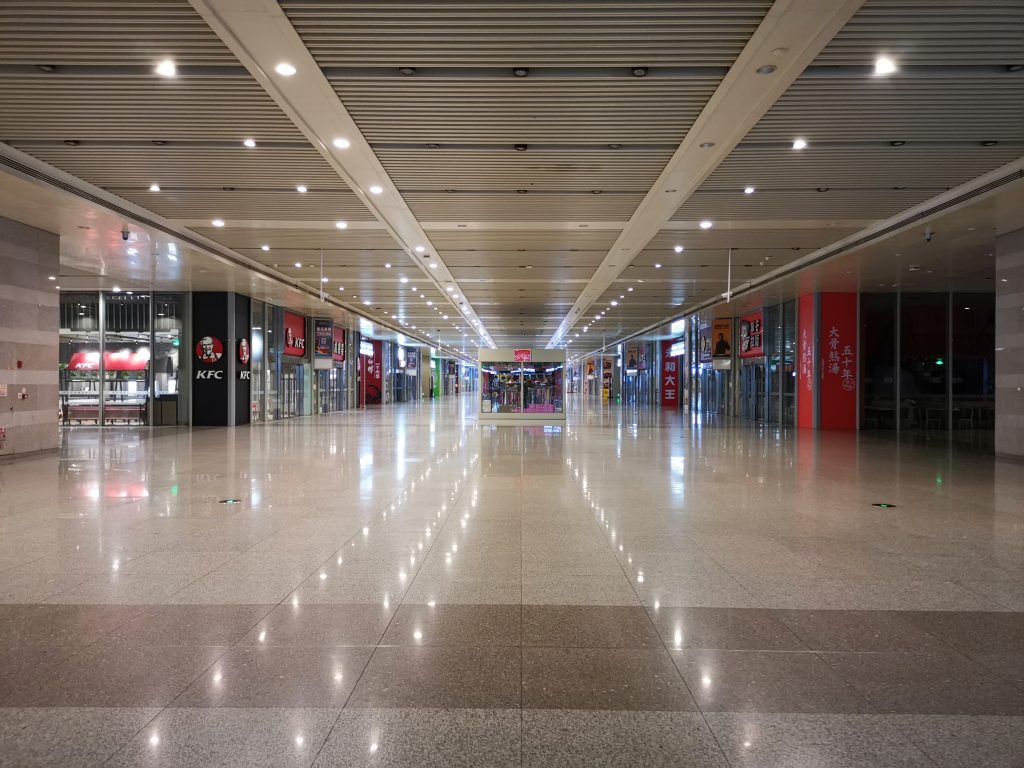
Monday
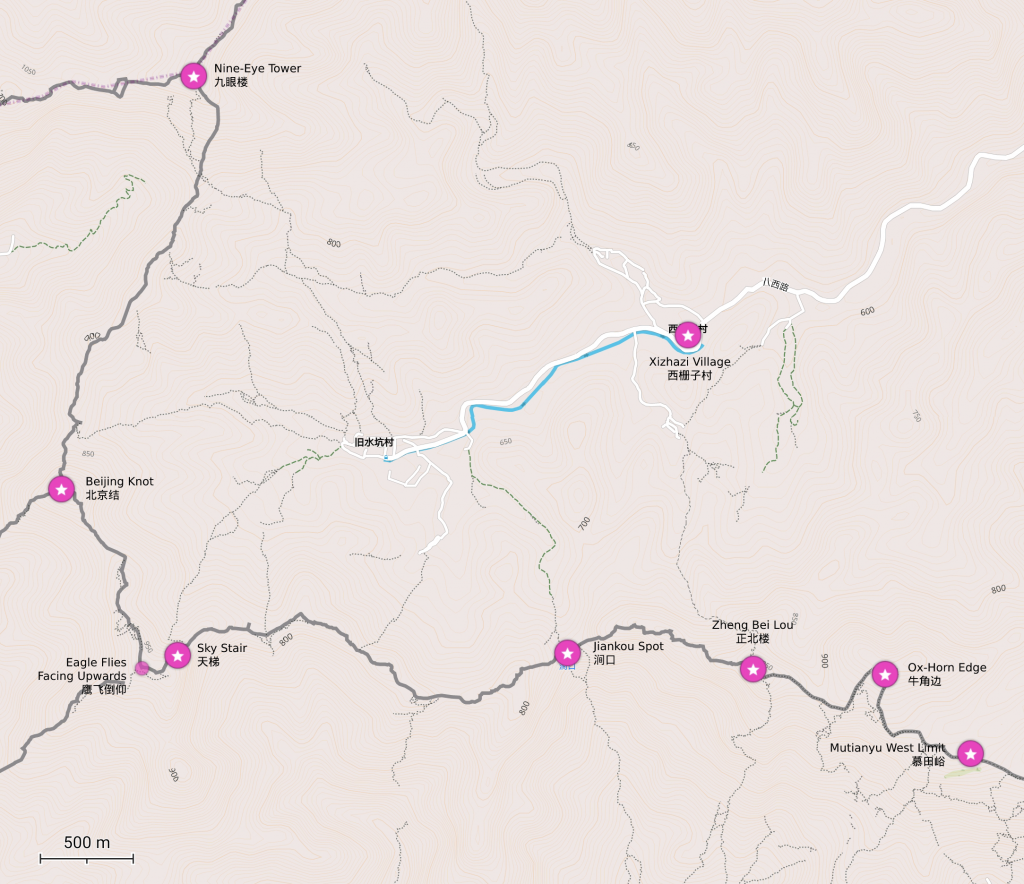
Upon arriving at Xizhazi Monday 6 pm after a full day in transit, I immediately headed straight towards the Nine-Eye Tower (九眼楼), located at the northwest corner of the Jiankou section, with less than two hours to nightfall. As always seems to be the case with life, though, things didn’t go according to plan. The 3 km long path from the village to the tower was mostly unmarked and heavily overgrown with vegetation, with plenty of ambiguous and concealed turns. Even with a pretty comprehensive terrain map and radionavigation on my phone, I had to backtrack at multiple points to find the right path.
At around 7:30 pm, almost 2 km in, I ran into trouble. My map showed a hard left turn to the west, but the path continued northwards, with no sign of any turn towards the wall. I followed the path for another short while, but it instead led away further from the wall. After spending another 15 minutes trying to find the turn, and with the daylight quickly fading, I made the decision to head back to the village.
On the way back, however, I noticed that there was another potential entry point to the wall a little over a kilometer from an earlier turning point. Not wanting to return defeated, I raced against the setting sun towards the other entry point. As I approached the wall, though, the incline grew steeper and more exhausting, and the path in became more ambiguous. At one point, I found myself just 50 meters away from the wall – however, I was completely unable to see it. I also noticed that I had already drifted well off track by that time. Eventually, at 8:30 pm, with zero light left and seemingly no actual way up to the wall, I turned back for good. It took me another hour to navigate my way back through the now pitch black forest back to civilization.
The route I took on the first day.
Tuesday
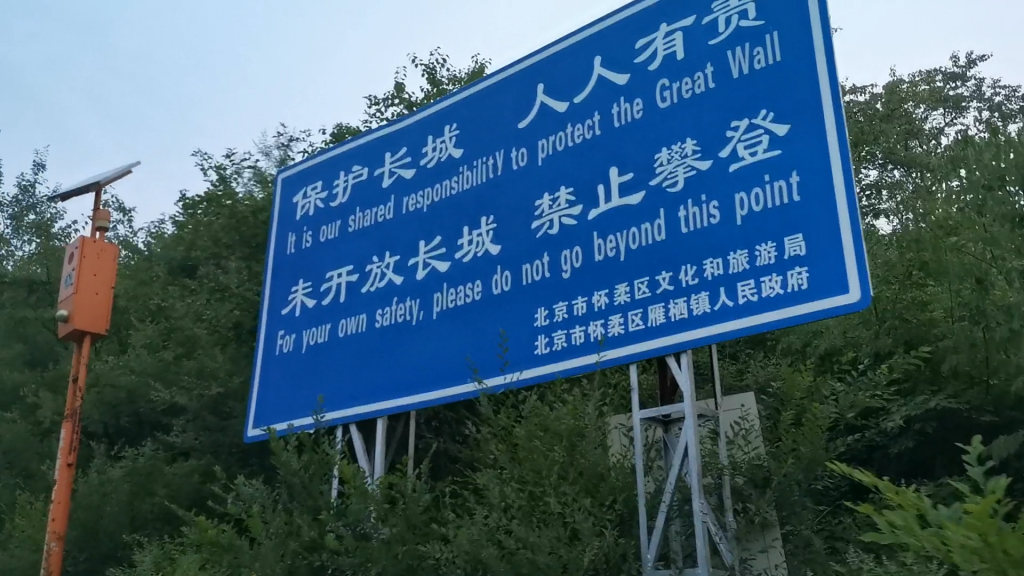
I set off at 5 am the next day, this time towards the Beijing Knot (北京结). Fortunately, the path in was much more walkable this time around, and I found myself on top of the wall by 5:40 am, at another tower 500 m north of the Beijing Knot. Surprisingly, even parts of the top of the wall was overgrown with vegetation as well. Battling against gravity between the dilapidated crenellations, I then made my way south towards the Beijing Knot. The path there (and the rest of my journey as well) was littered with rubble (sometimes the path was the rubble), and often, parts of the wall had downright collapsed, leaving just a narrow strip of bare rock to cross, with sheer drops on either side. Some sections also featured inclines of 70+ degrees.
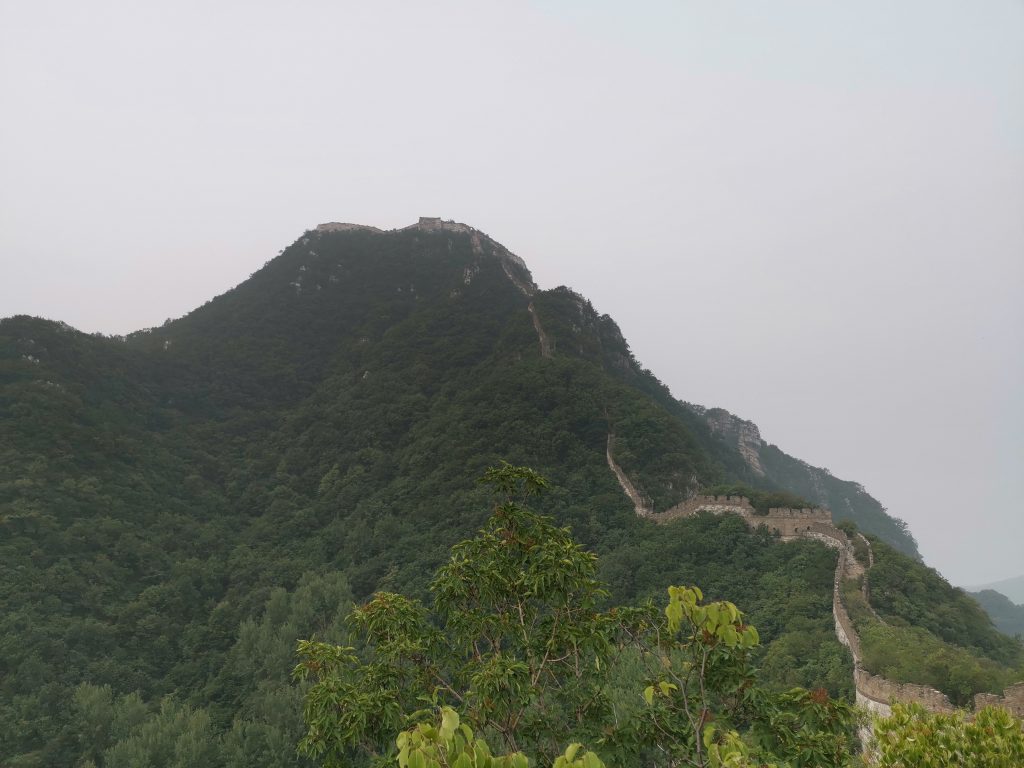
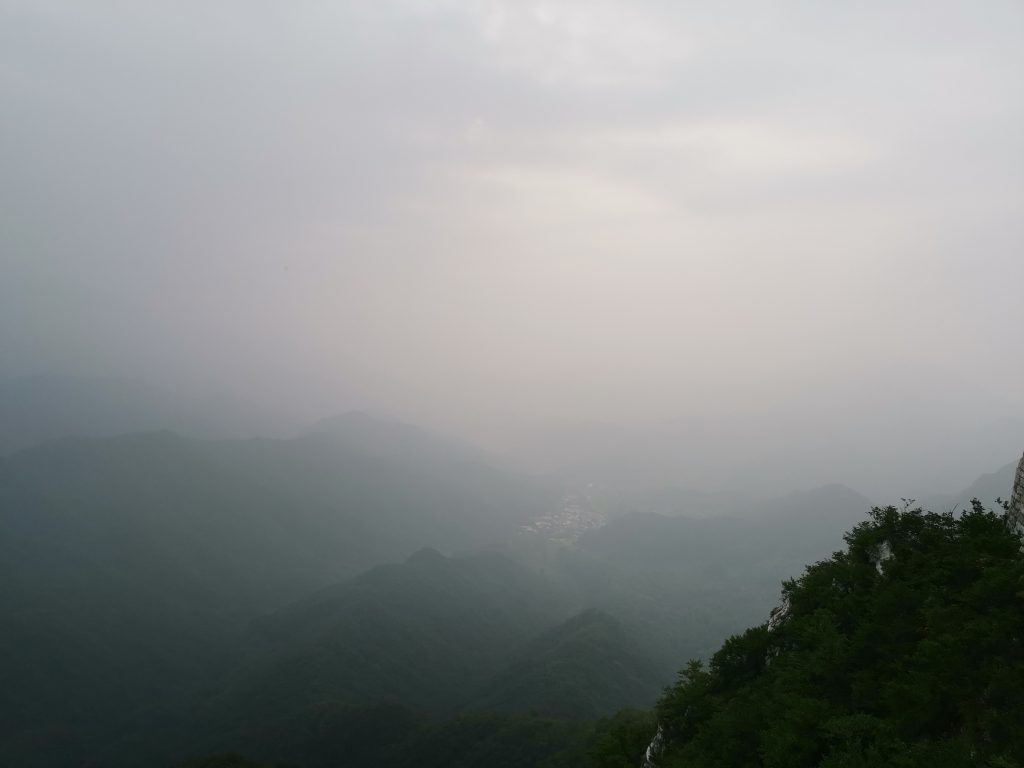
I reached the Beijing Knot at around 6:30 am. Here, I was at an altitude just shy of 1000 m, and was rewarded with a panoramic view of the mountains, villages, and other parts of the Great Wall in the surrounding areas. Unfortunately, this experience was somewhat detracted by the poor (4-5 km) visibility. I continued on southwards towards the purportedly most challenging parts of Jiankou: the Eagle Flies Facing Upwards (鹰飞倒仰) and the Sky Stairs (天梯). Allegedly, these two features claim the lives of some twenty climbers every year.
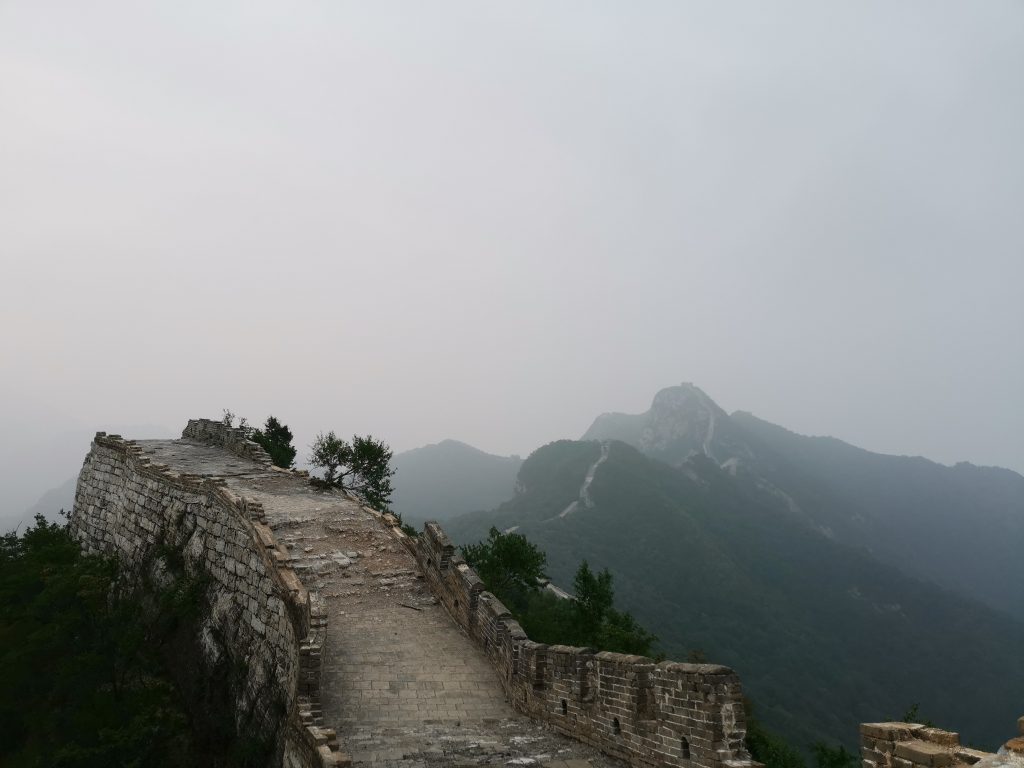
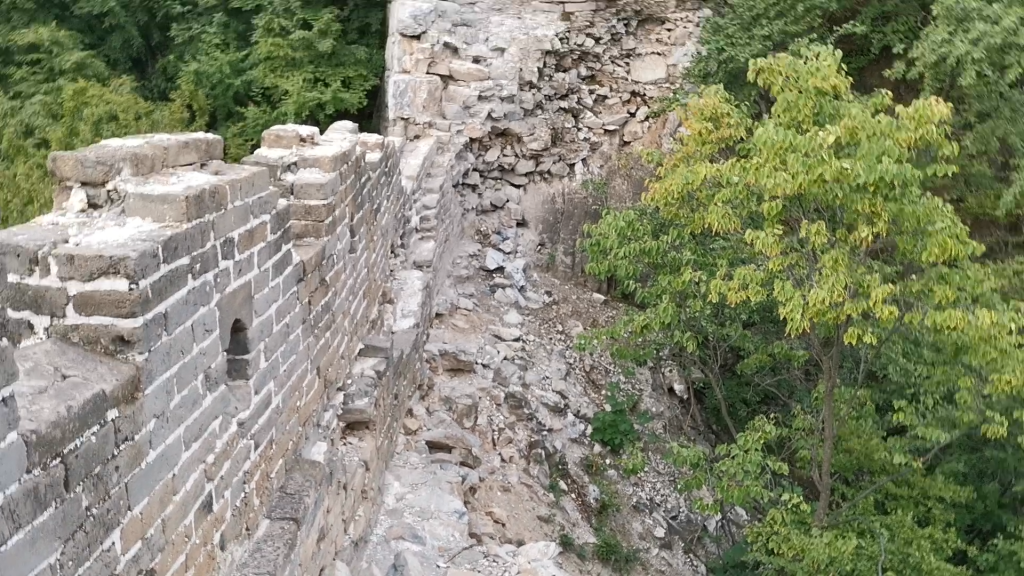
At 7:40 am, I arrived at the Eagle Flies Facing Upwards, which is essentially a cliff made of weathered rubble stretching about 100 m upwards at an 80 degree incline. The battlements on both sides have collapsed completely, meaning that once you get on it, the only way is up. While it didn’t look too intimidating from the bottom (relatively speaking), I made the mistake of looking back down while halfway up – and the view was not one that inspired confidence, especially when you’re clinging to a few small rocks on a precipice, one misstep away from certain death. I managed to complete the rest of the climb, though, and moved on towards the Sky Stairs.
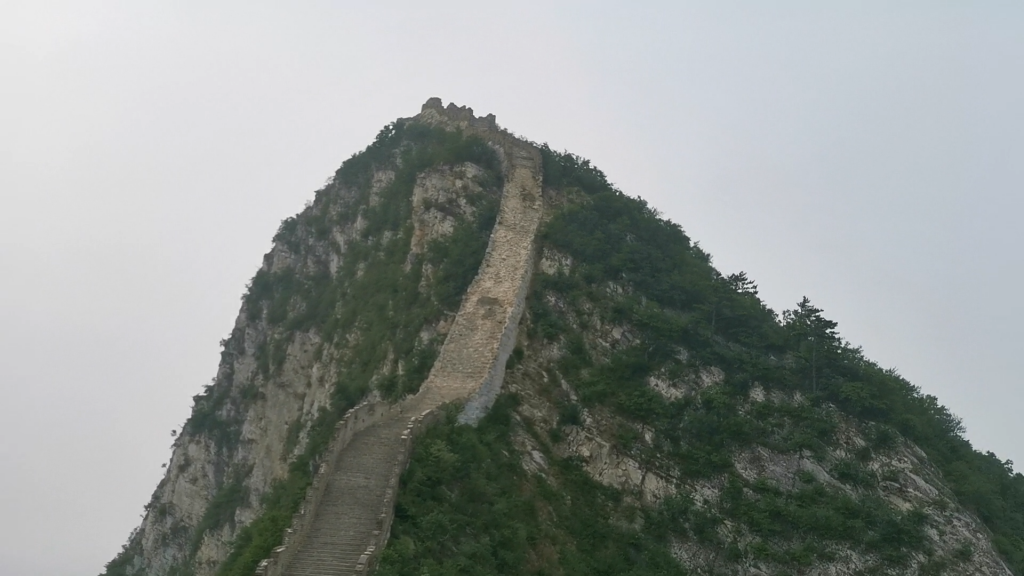
Except, well, I never reached it. After trekking on for almost another hour, I consulted my map, and realized that I had somehow already passed it by 500 m. Simultaneously relieved and disappointed that I wouldn’t have another chance to be one of this year’s lucky twenty, I moved on towards the next significant part of the wall – the Jiankou Spot, the lowest point on this section of the Great Wall.
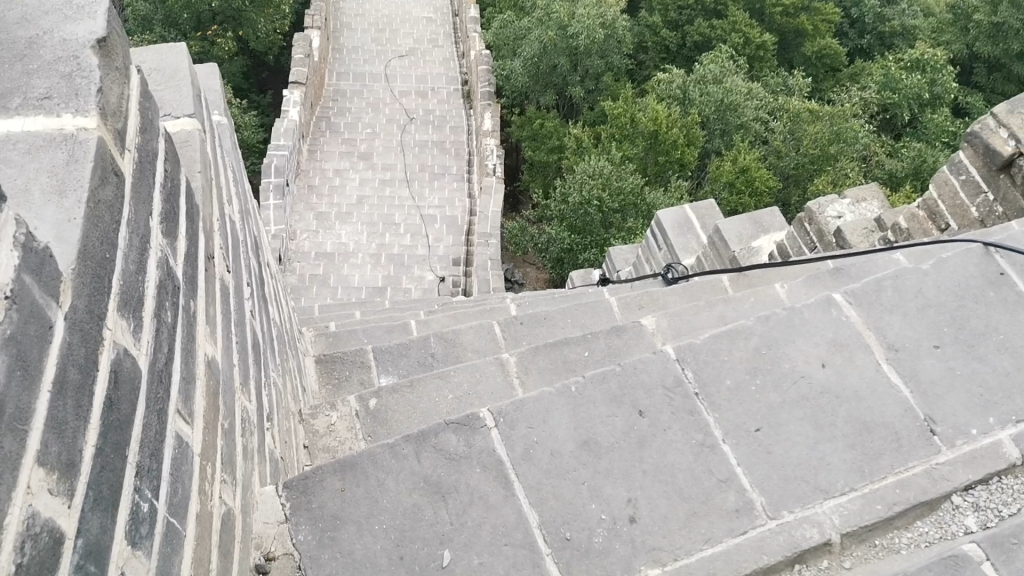

The journey to the Jiankou Spot was long and arduous, consisting of plenty of literal ups and downs, and I began to feel the effects of sleep deprivation from last night (I had about 3-4 hours of sleep, thanks to drinking tea and chatting with some locals at Xizhazi) combined with fatigue from the physical exertion. The heavy pack I was carrying (containing clothes, a tent, food, 10L of water, and other equipment) didn’t help, either. After another 4 km, at around noon, I finally arrived.
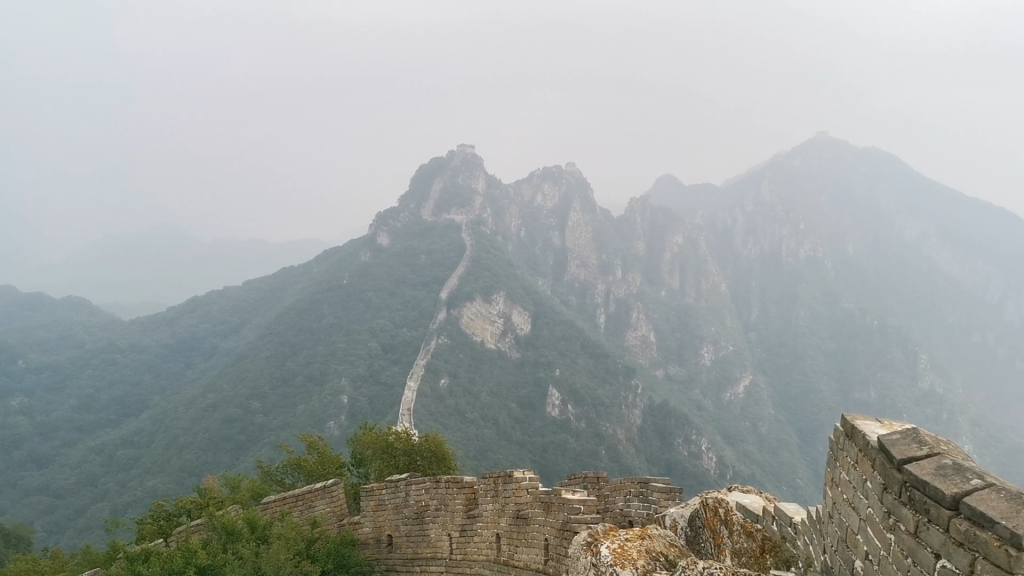
I trudged on towards Zheng Bei Lou with great difficulty. Although the other parts of the wall which I’d seen so far weren’t exactly in pristine condition, this segment seemed to have been the worst hit – the entire path was composed completely of rubble. At around 1 pm, I hit an impasse. Ahead of me lay a vertical cliff formed entirely from rock – there wasn’t even rubble to provide convenient and consistent handholds and footholds. It looked as if someone had opened up this part of the wall in a world editor and clipped in a random cliff face into the wall. Not feeling quite suicidal enough to attempt the climb, I looked around for a detour; there was none. Even on my map, the nearest path that would put me ahead of this cliff was to head back to the Jiankou Spot, return to Xizhazi village, and take a route from the village to Zheng Bei Lou. Having exhausted my options, I made the decision to turn back.
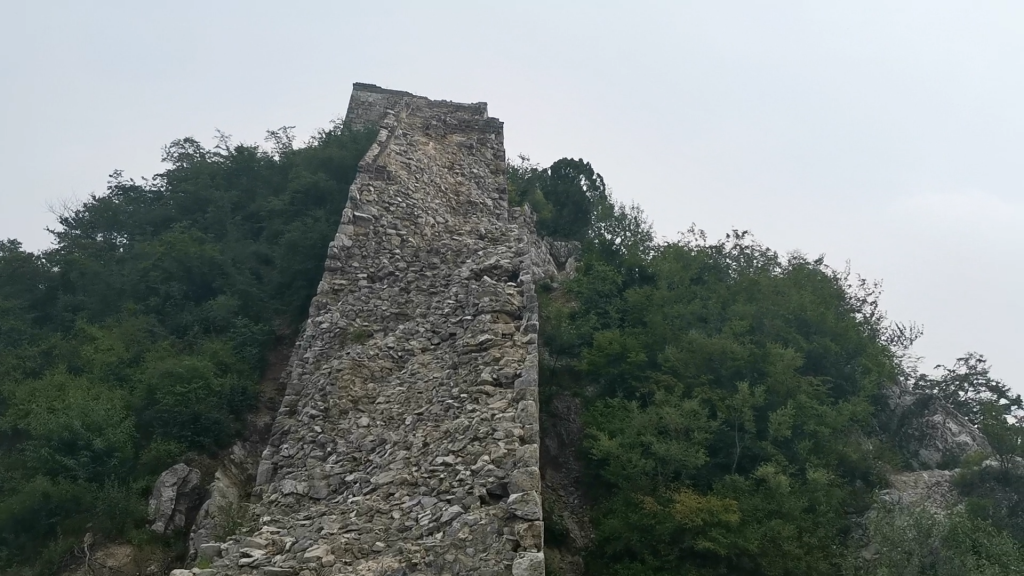
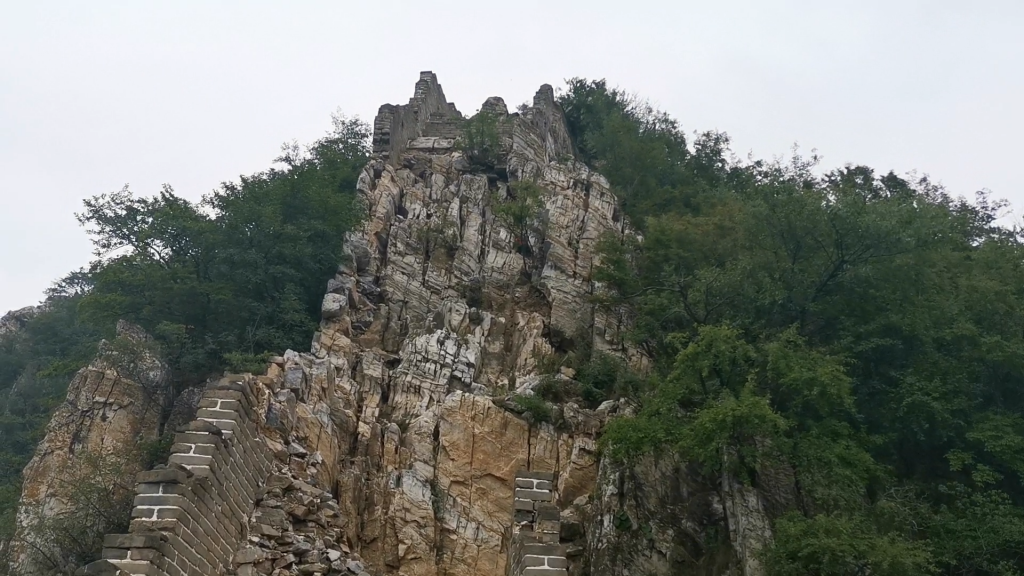
The way back to Jiankou Spot was the most difficult part of the entire hike. While the uphill climb from Jiankou Spot to the cliff had only taken me half an hour, the return journey required close to an hour. Along the way, I sustained multiple sprains and contusions from slipping on the steep decline. As I headed back to the village from the wall, I considered whether it was really worth it to go back up. It was forecasted to rain in the evening and throughout the night, and because of this, I didn’t want to camp on the wall (this was why I’d wanted to rush up to the wall on the first night, while it was dry). By the time I got up to Zheng Bei Lou, I’d have to return almost immediately to make it back by sundown, and the visibility was showing no signs of improving. On the other hand, I didn’t want to give up just like that, after already having endured through so much of the rest of the wall. And yet, a refusal to accept defeat was what had gotten me trapped in the middle of a forest in absolute darkness, kilometers away from the nearest civilization, the previous day.
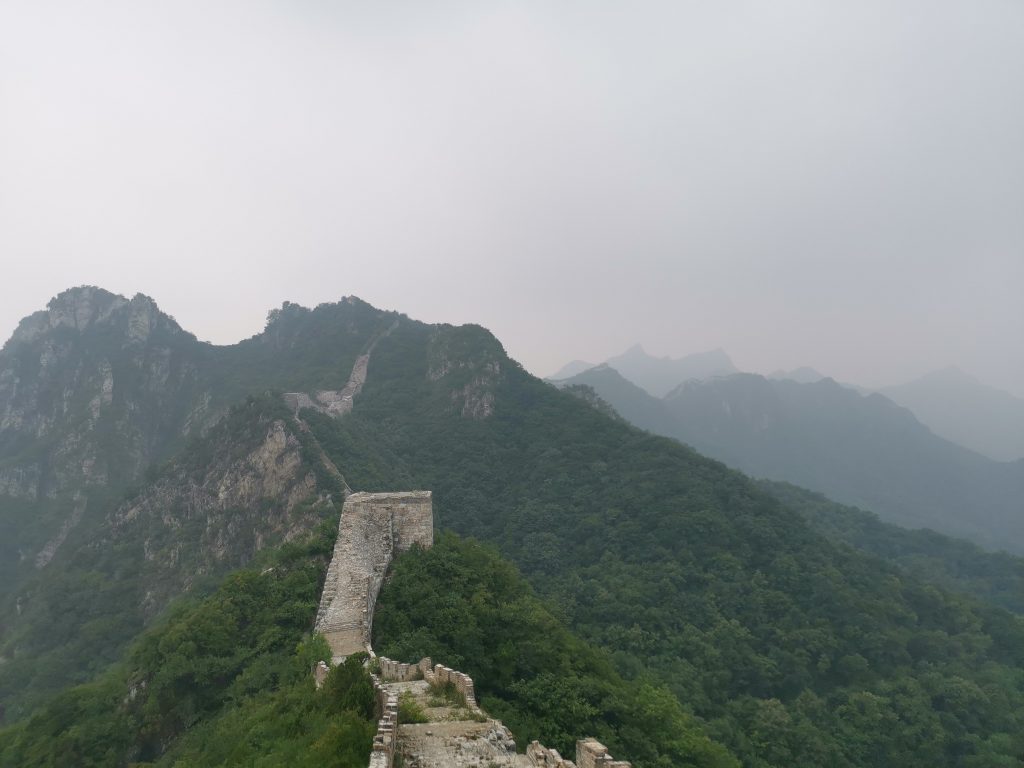
Ultimately, I decided to call it quits. I’d already experienced plenty enough of the wall. I got some well-deserved rest at the village, and set off back towards Beijing at 6:30 am the next morning.
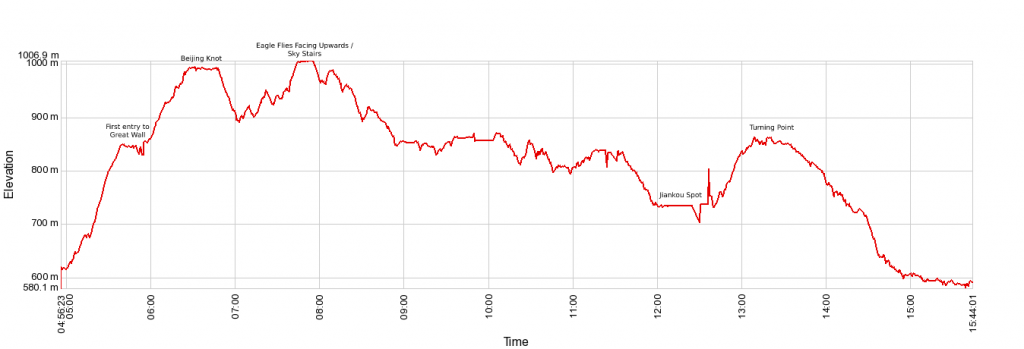
The route I took on the second day.
Wednesday
The plan for Wednesday was simple: get to a hotel that I’d booked, put my stuff down, and head to the Summer Palace for a relaxing afternoon. Apparently, I hadn’t fulfilled my weekly quota of twists and turns over the past two days, because the Universe decided that this would not be the case.
I got to the hotel at around 11 am. But as it turns out, all hotels in China are required to register their guests within a central system. Because I’m not currently wanted by the Chinese government, this wasn’t an issue. But it also turns out that for some reason, not all hotels are allowed to register foreigners, and of course, the particular one that I had booked happened to be one of them. In fact, this is the case for most hotels – in Beijing, at least – because I proceeded to spend the next two hours calling up some fifteen other hotels, who all told me that they didn’t accept foreigners, until finally, one said they did.
This hotel happened to be the Pai Hotel Beijing Happy Valley. This came as a surprise to me, because as the name implies, there is a Happy Valley theme park in Beijing – something which I had not been aware of earlier. Having already visited the Shanghai counterpart, I decided to extend my Beijing trip by a day and pay this one a visit as well. But first, off I went towards the Summer Palace, after several hours of delay and drama.
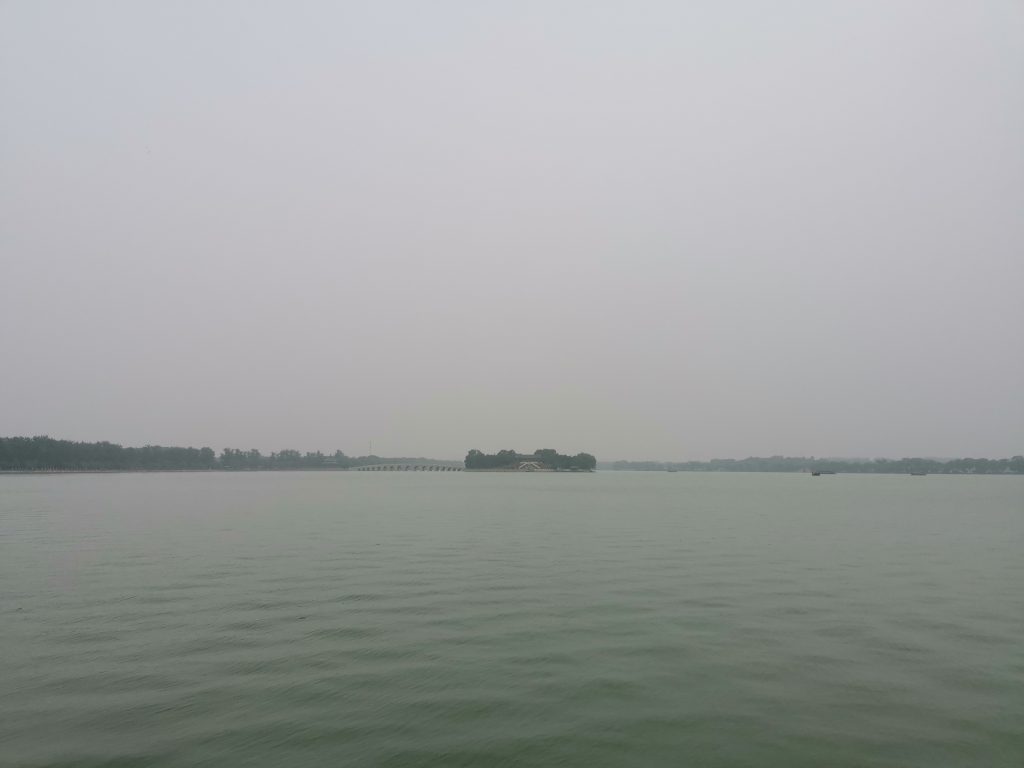
Like the previous day, the poor visibility was a distraction from the natural beauty of the Summer Palace. But, although there was plenty of it, beauty was not the most important thing about the Summer Palace. What I found most striking, instead, was how much it actually felt like a walk in the park (in the less crowded places, at least).
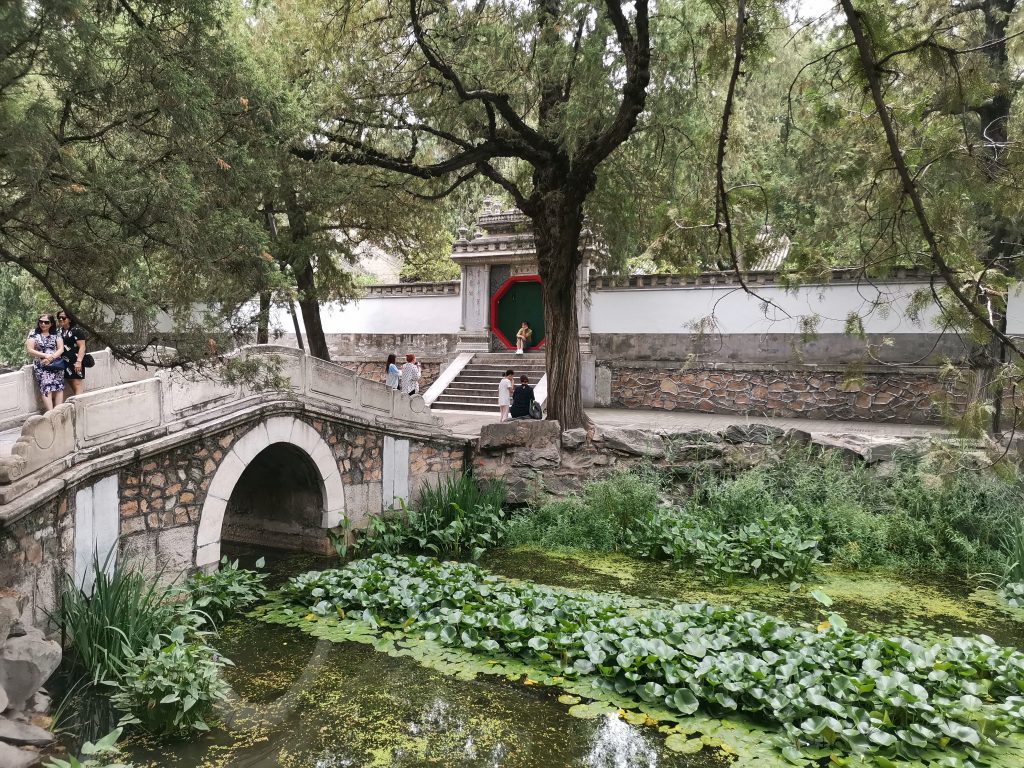
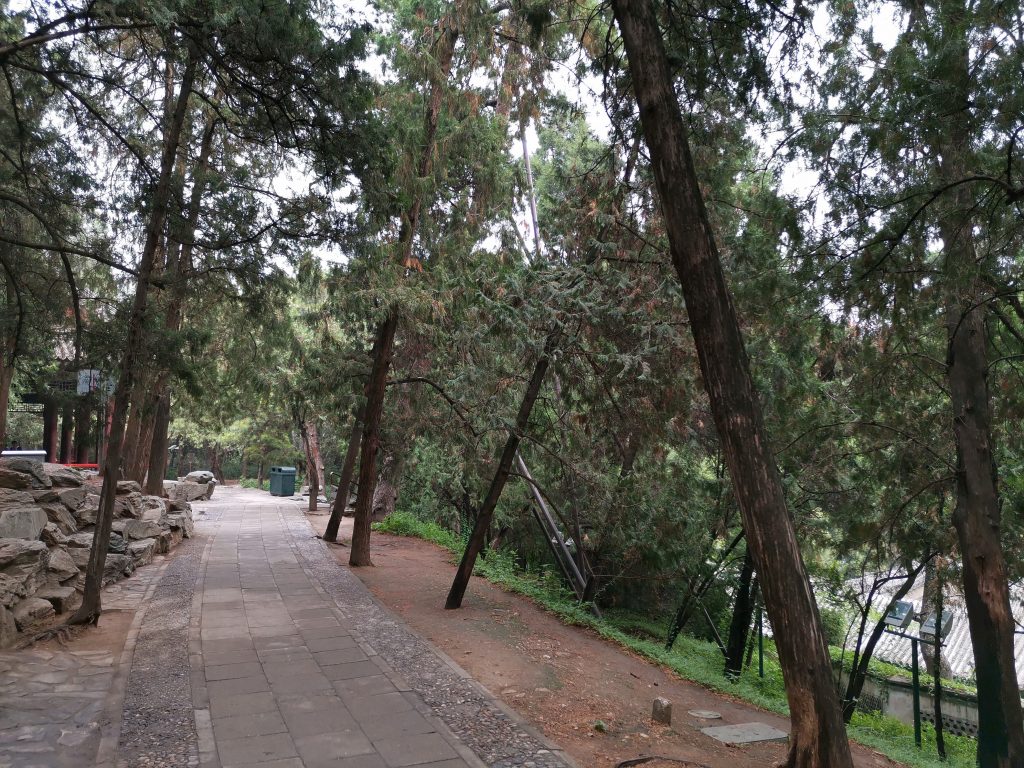
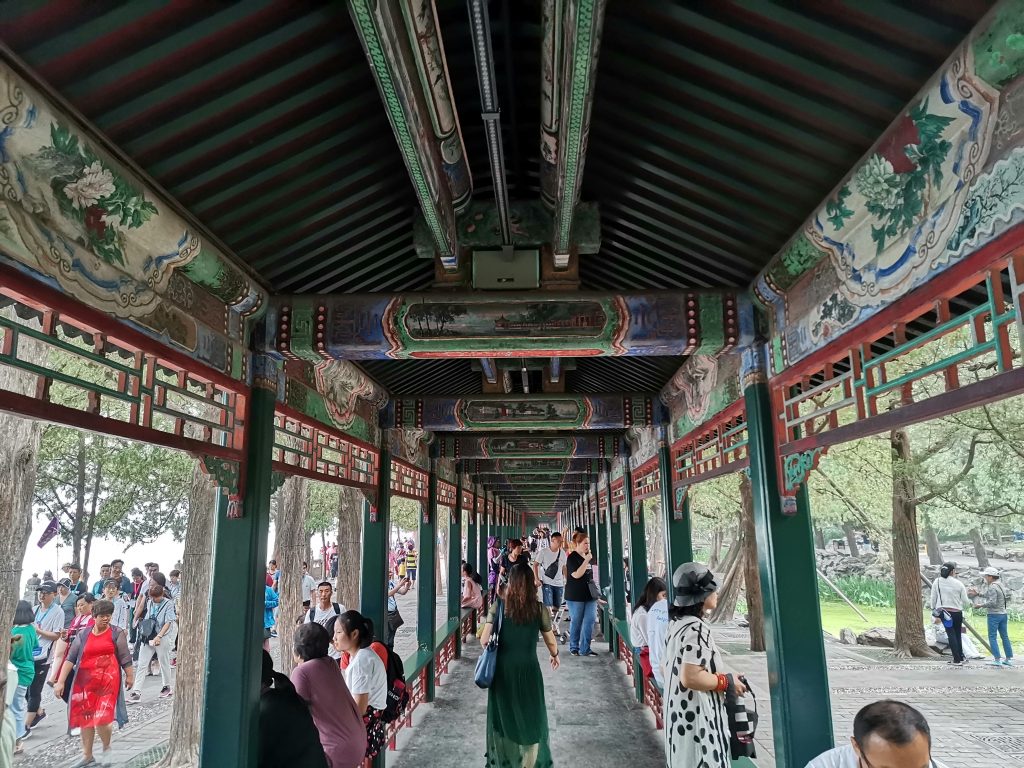
As I walked on the shaded stone path, flanked by trees and rocks, and surrounded by chirping birds, I was overcome with a sense of tranquility and weightlessness. Here was a place where you could momentarily slip away from all your problems and troubles, and completely immerse yourself in the calming sensations of the cool lakeside breeze.
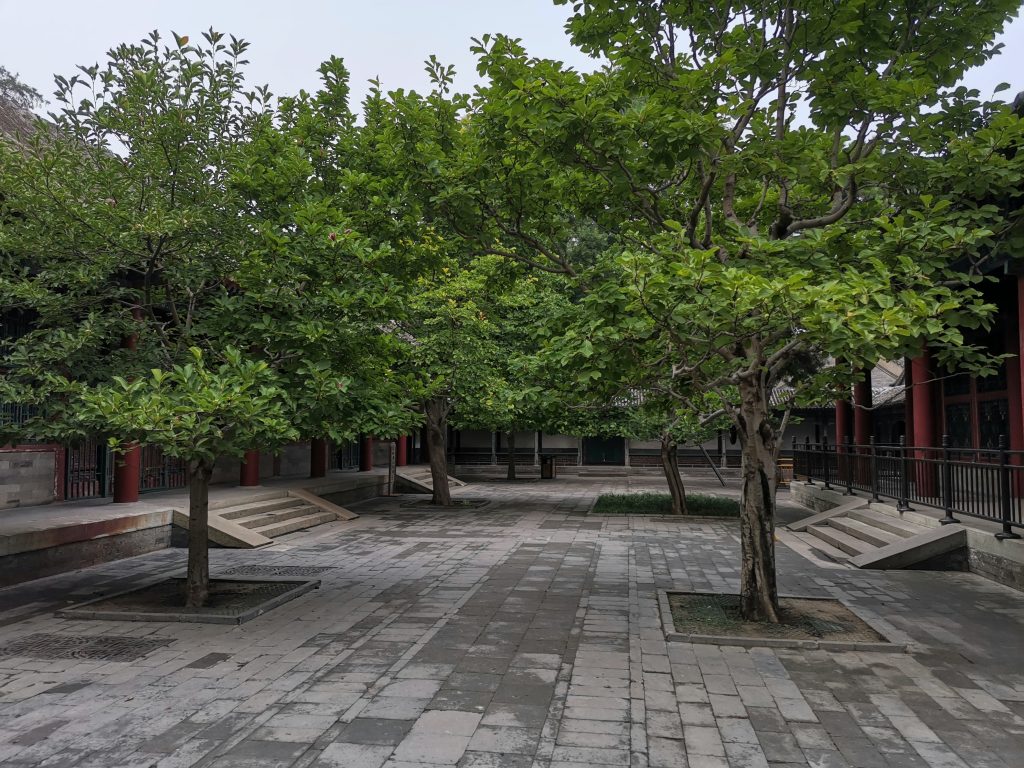
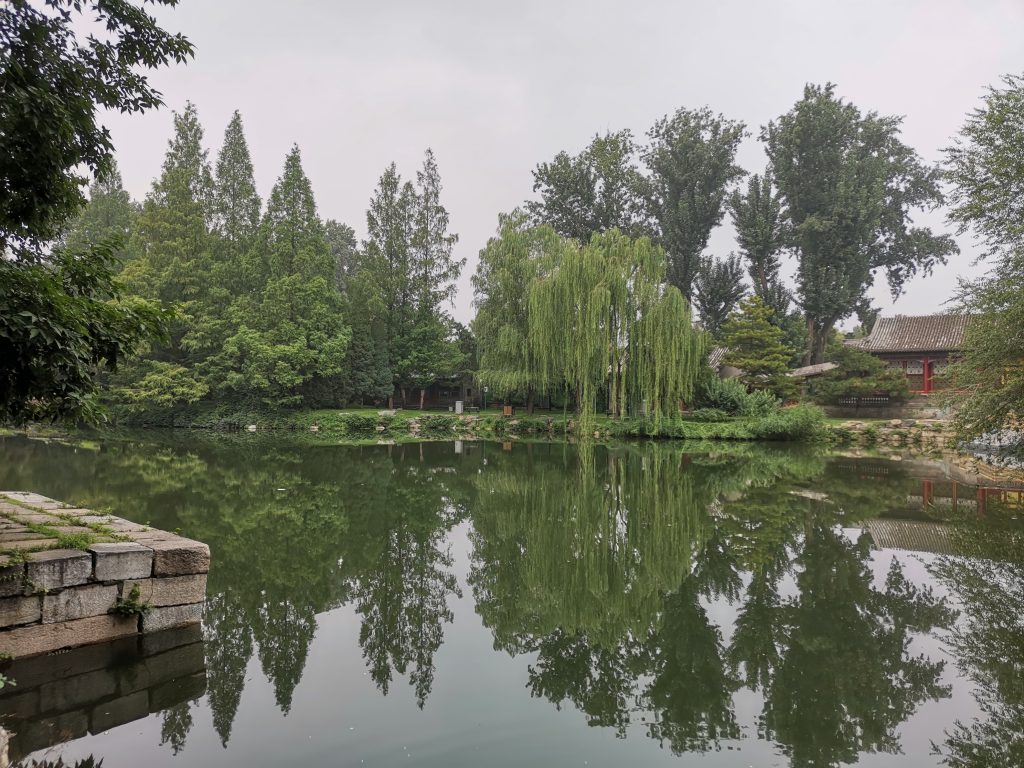
After exploring some of the historical and cultural landmarks dotted among the greenery, I spent the rest of my evening walking along the circumference of the lake.
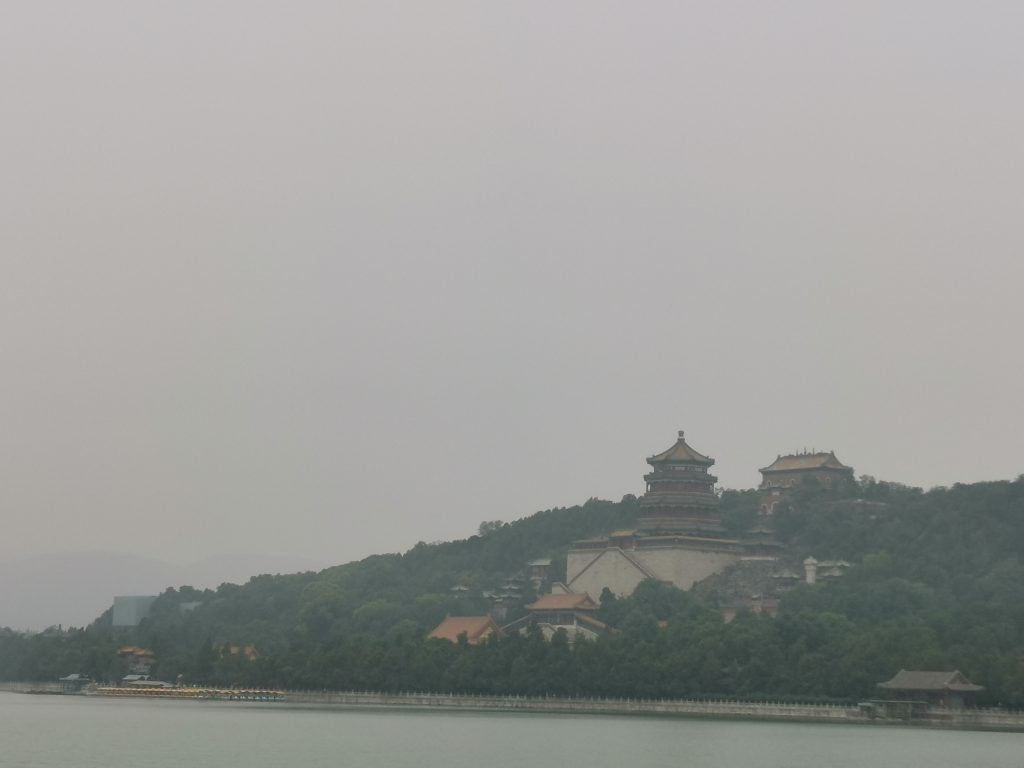
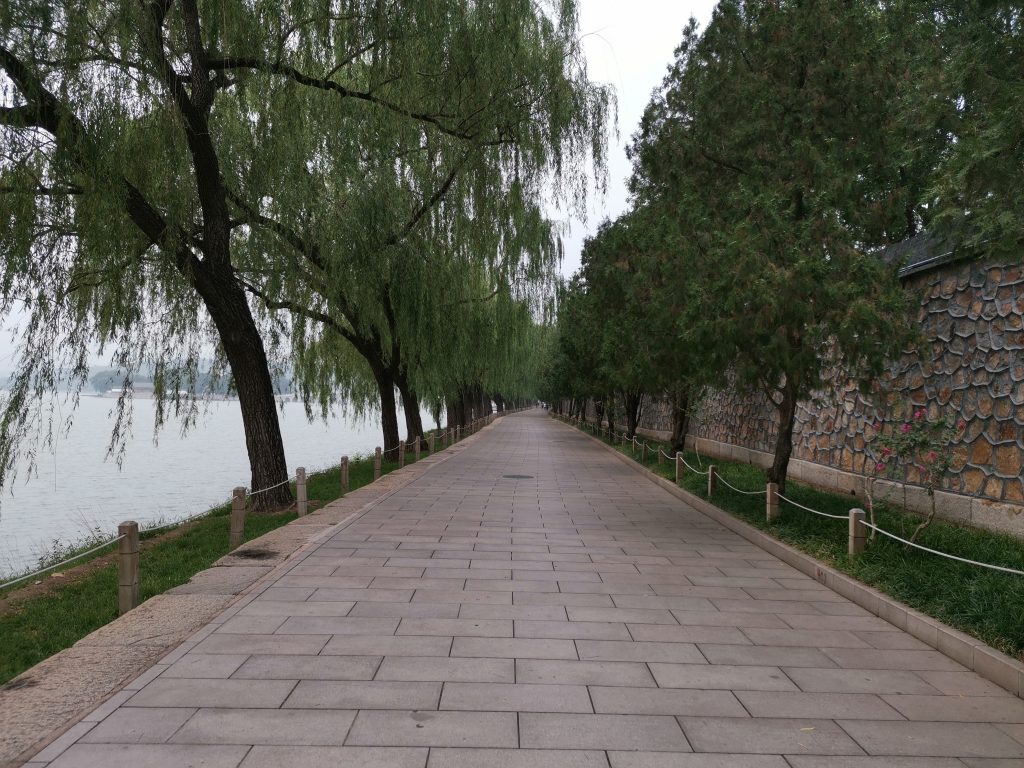
Thursday
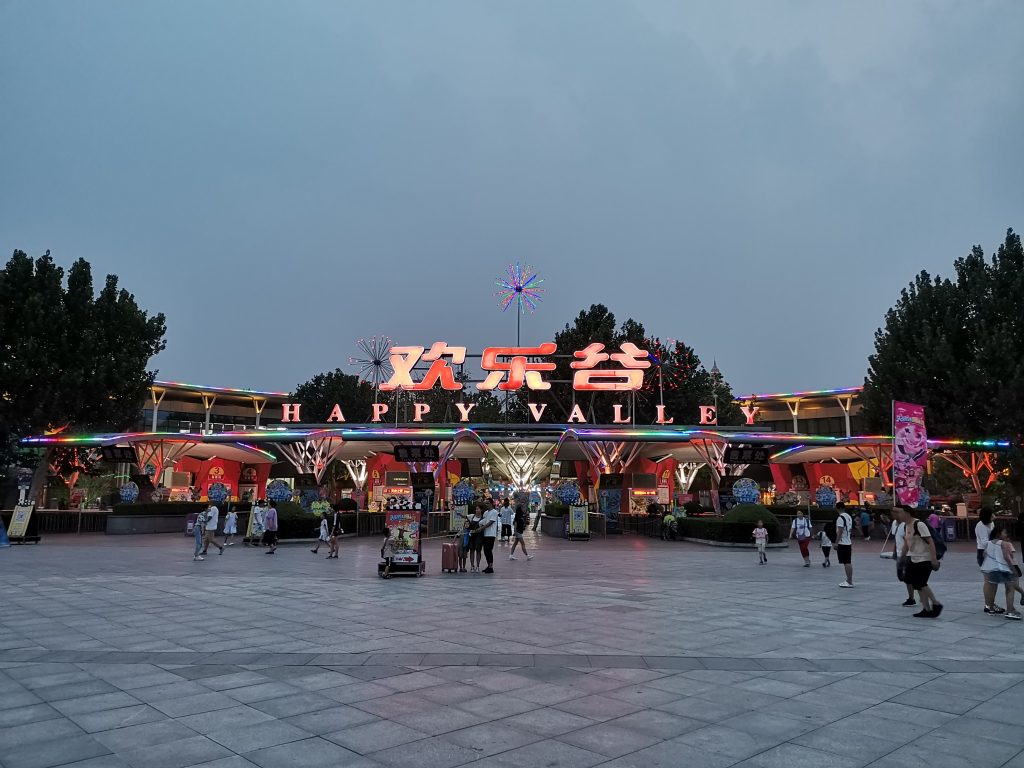
I departed early next morning for Happy Valley Beijing, which was just a stone’s throw away from my hotel. Thankfully, it was moderately empty – the wait times for the rides ranged mostly from five to twenty minutes. The longest queue I joined was the first ride I went on: the ‘Extreme Rusher’, which had a fifty minute wait, and lived up to its name. The roller coaster ran for only 35 seconds, during which riders would be constantly subjected to high speeds and accelerations.
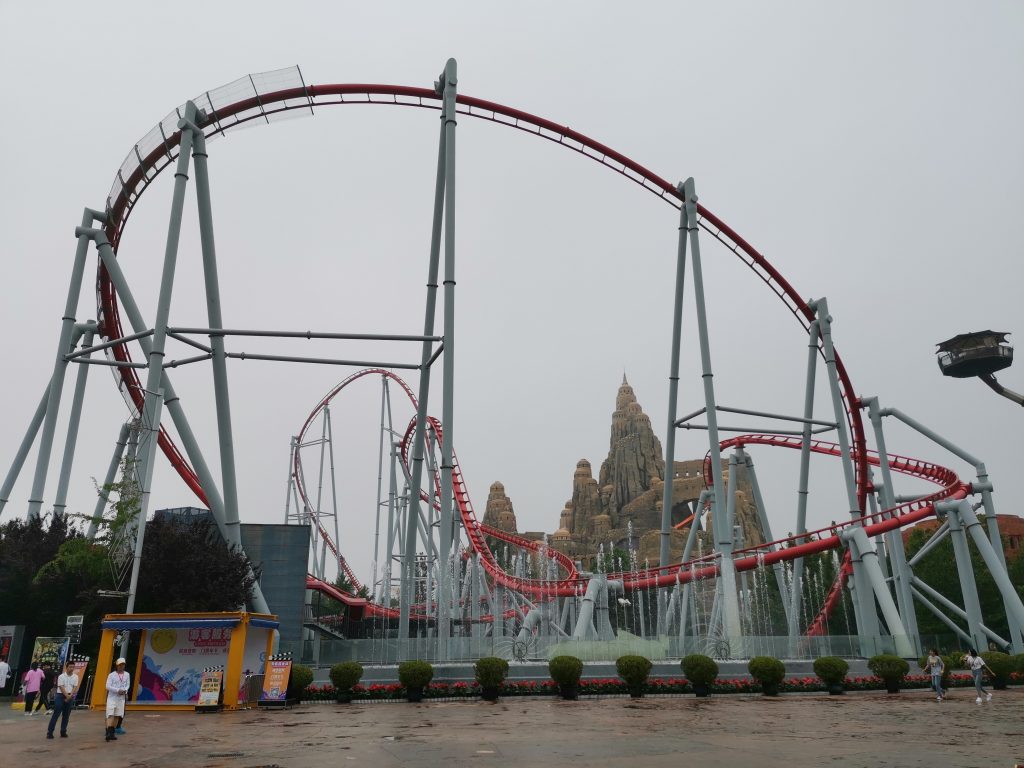
It turned out that I picked a good time to come – a new section, the Shangri-La, had just opened three weeks ago. Throughout the rest of the morning, I went around sampling the various roller coasters (and other more extreme rides) on offer – there were a total of seven coasters at this park. Some of the more interesting ones were the ‘Crystal Wing’, a roller coaster with a superman-like riding style, the ‘Apollo Wheel’, a giant wheel with riders seated around its circumference that swung back and forth like a pirate ship, and the ‘Energy Collector’, that took riders up high and gave them a panoramic view of the park.
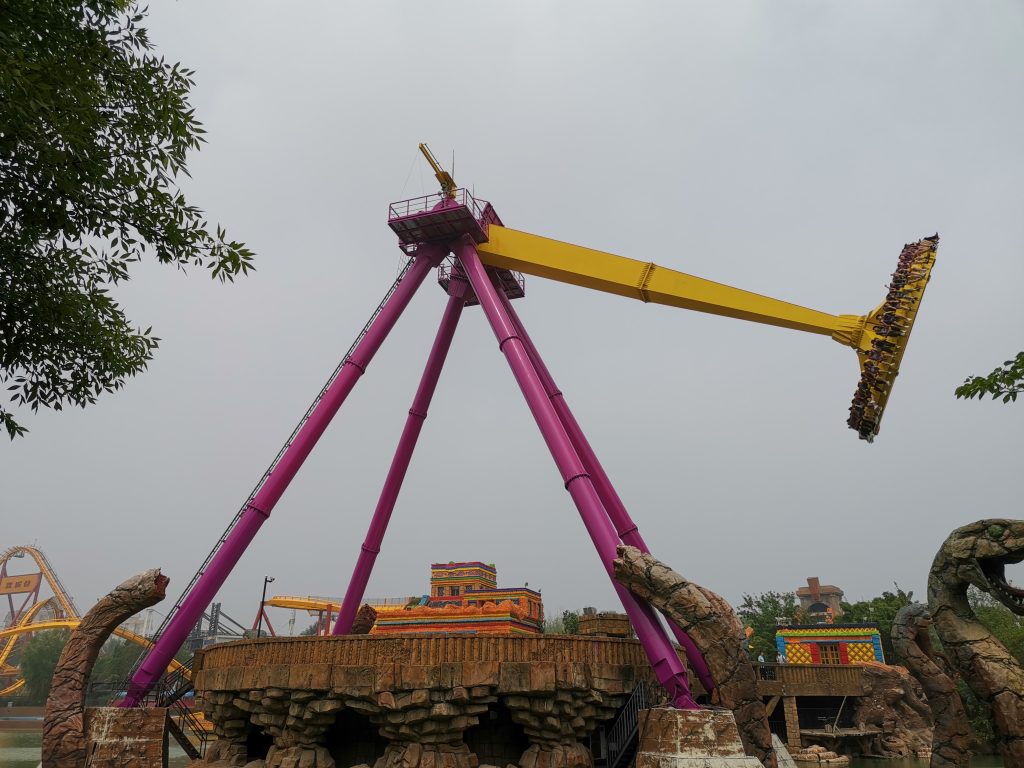
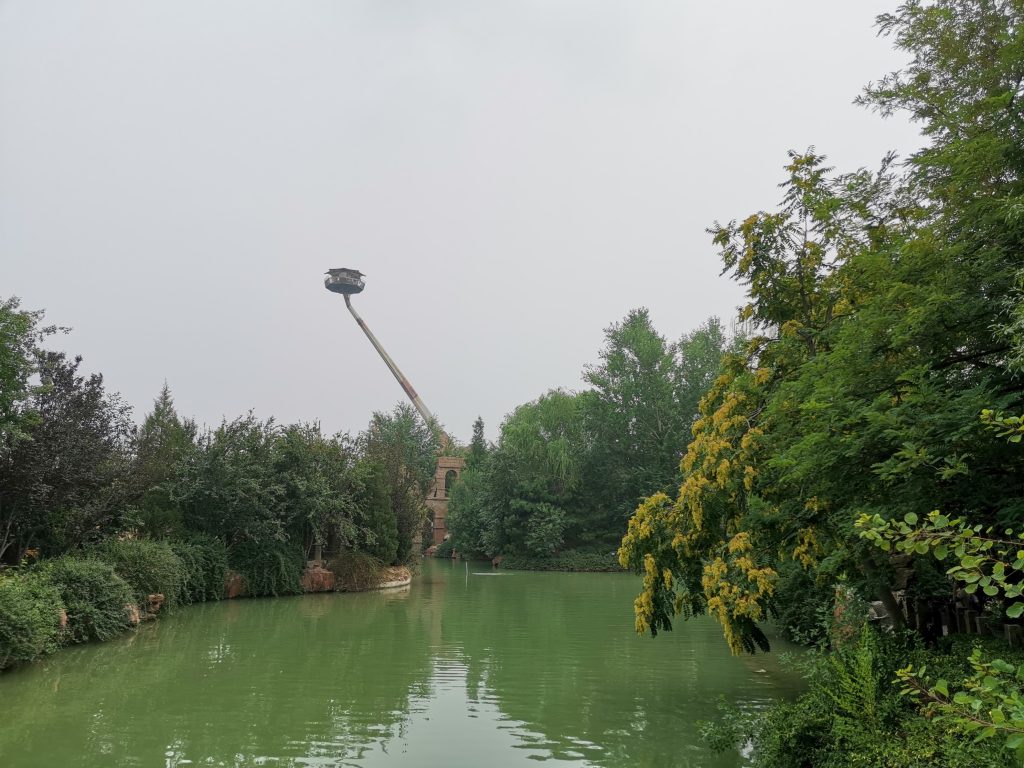
I also attended a few shows and performances, although most of them were largely disappointing, suffering from amateurish costumes and poor sound synchronization, amongst other issues.
In the afternoon, I headed to the theater to see the Golden Mask Dynasty performance. It had received extremely good reviews online, and for good reason. In stark contrast to the rest of the shows that I’d attended so far, the performers stopped at nothing to put on an entertaining show (maybe that’s where all the budget went). The performance included impressive dance and acrobatics segments, with elaborate costumes and props. There were live birds, trampolines, parts of the stage which transformed completely, and at one point, water flooded the entire stage. I’d seen performances of a similar style at Disneyland Shanghai just a few weeks ago, but none of them were quite on the same level as this. And in a nice twist of luck, I’d been assigned a box seat.
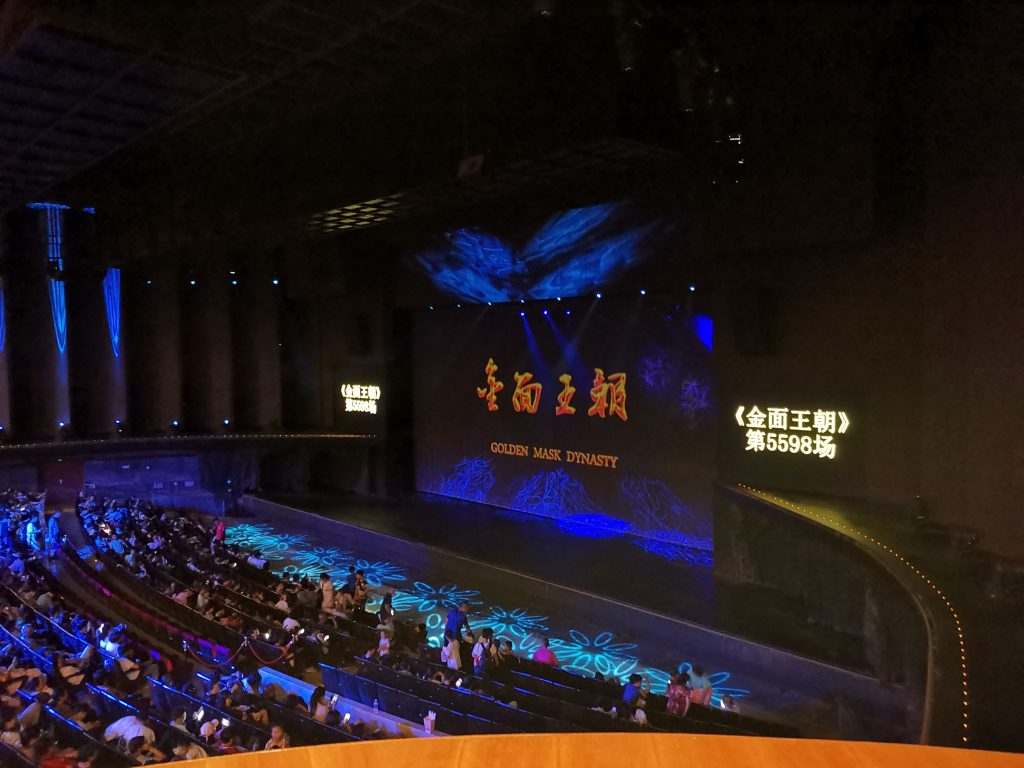
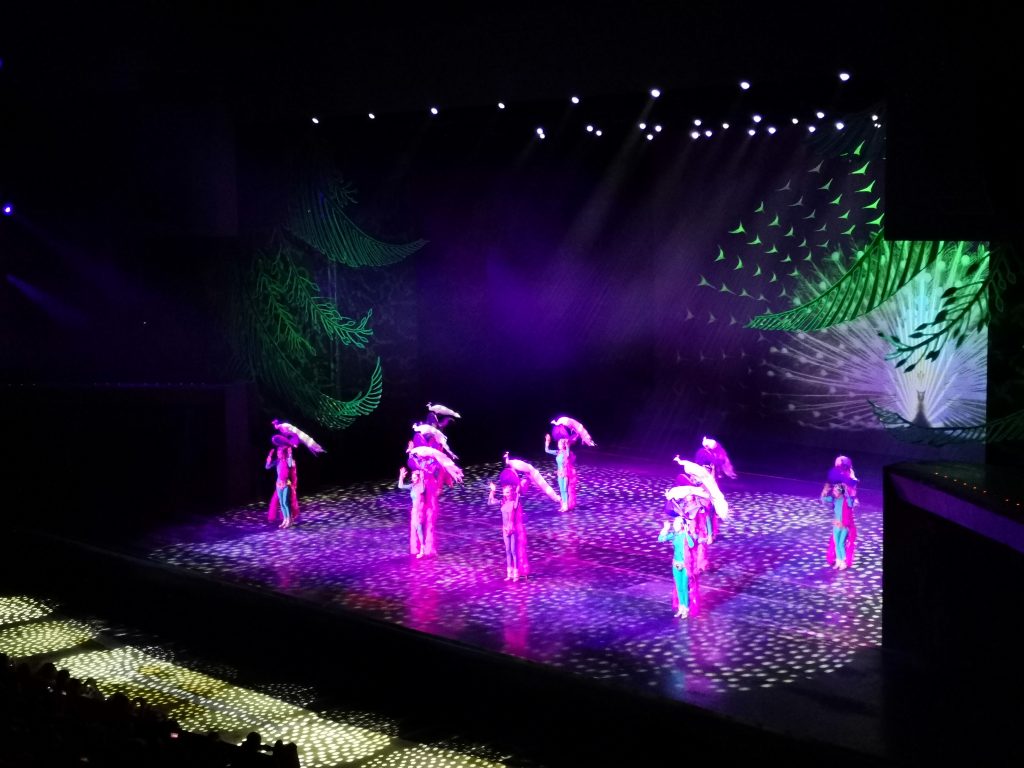
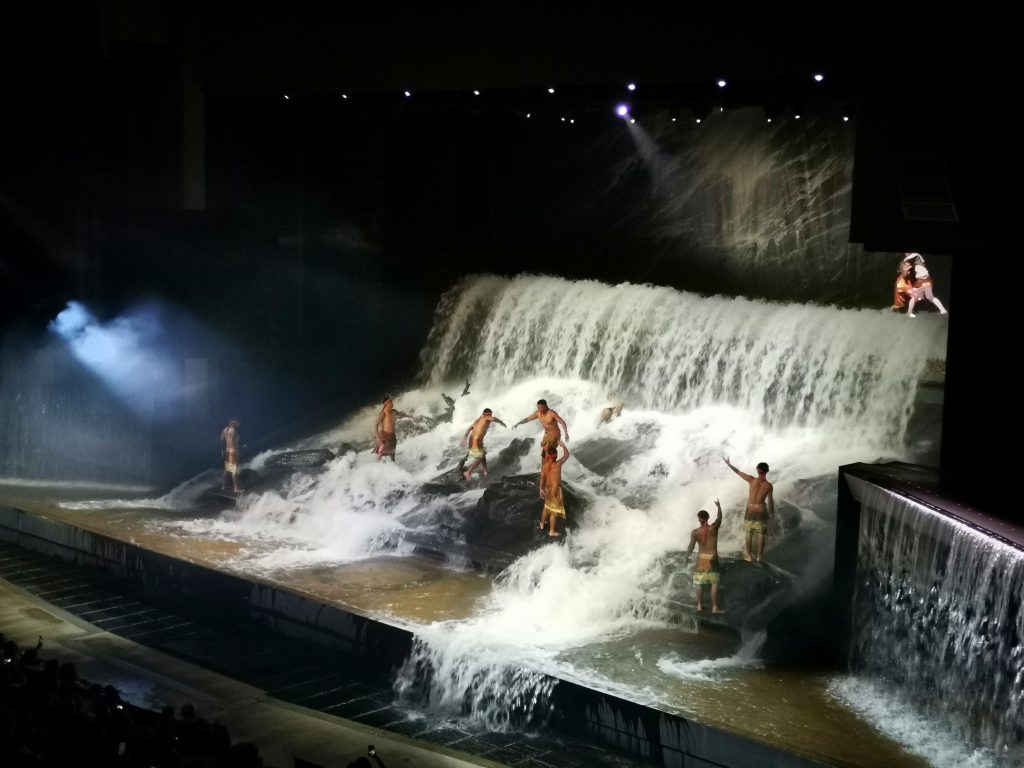
Satisfied by this spectacle, I continued on around the park, re-riding the more entertaining rides for the rest of the day. I also stumbled across a rather interesting diving-themed performance.
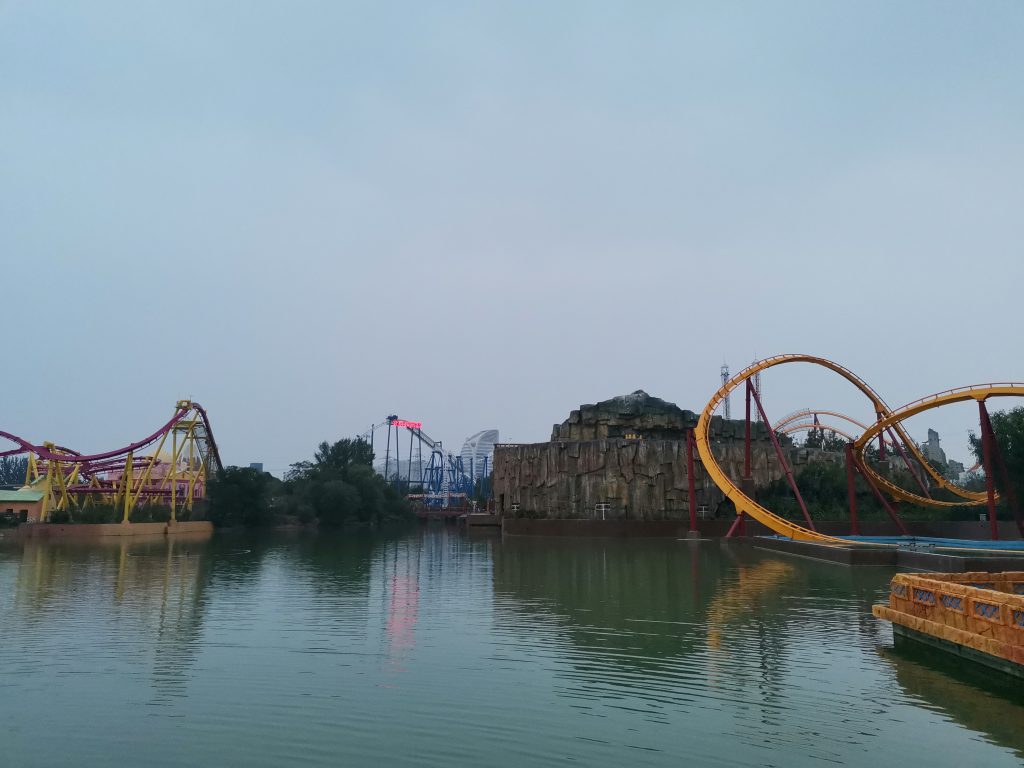
Friday
My last stop for this trip would be the Forbidden City located in the heart of downtown Beijing. The ‘forbidden’ part turned out to be a bit more literal than I expected – by the time I got there at 10 am, the entry tickets (limited to 80,000 every day) were already sold out. Considering the sheer number of people that were flooding in to the gates beside me, this was hardly a surprise.
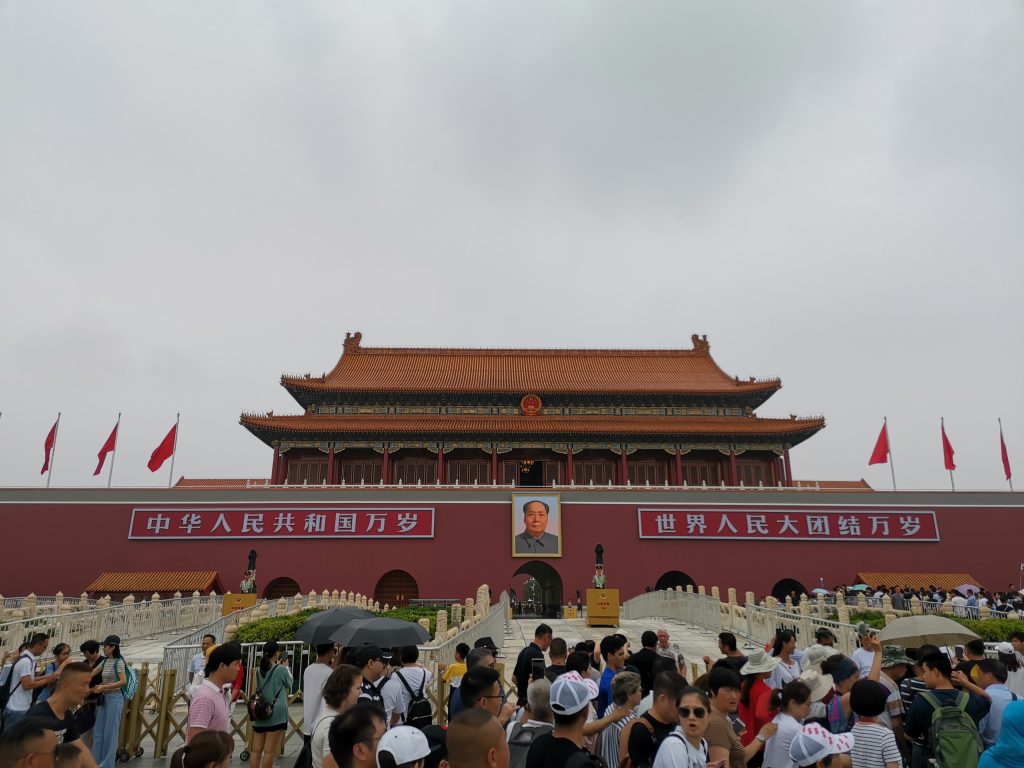
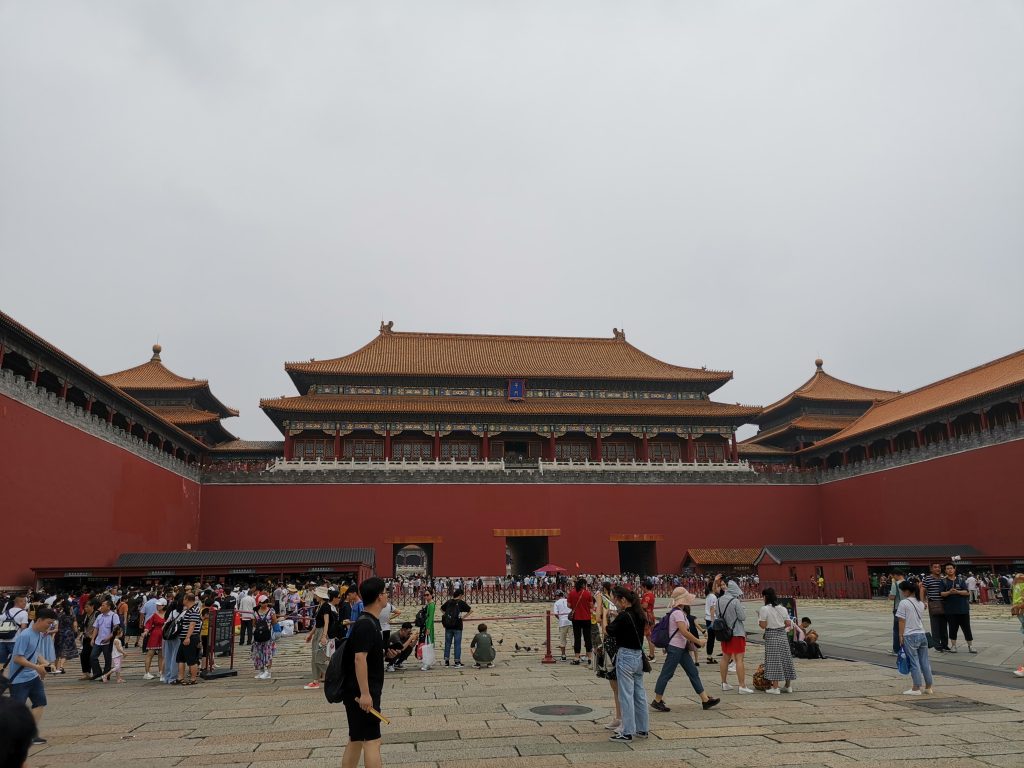
After having a bite to eat, I turned my attention instead to Tiananmen Square (天安门广场), just opposite the Forbidden City. The square is surrounded by important buildings: to the north, the Forbidden City; to the east, the National Museum of China, to the west, the Great Hall of the People, and to the south, the Mausoleum of Mao Zedong.
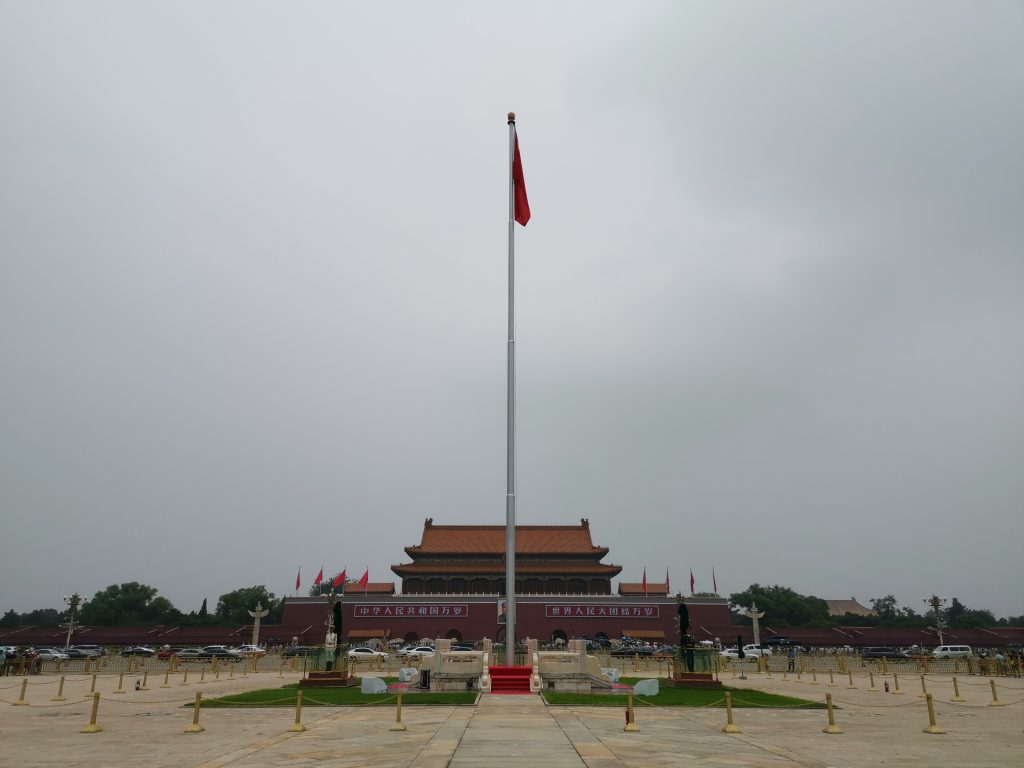
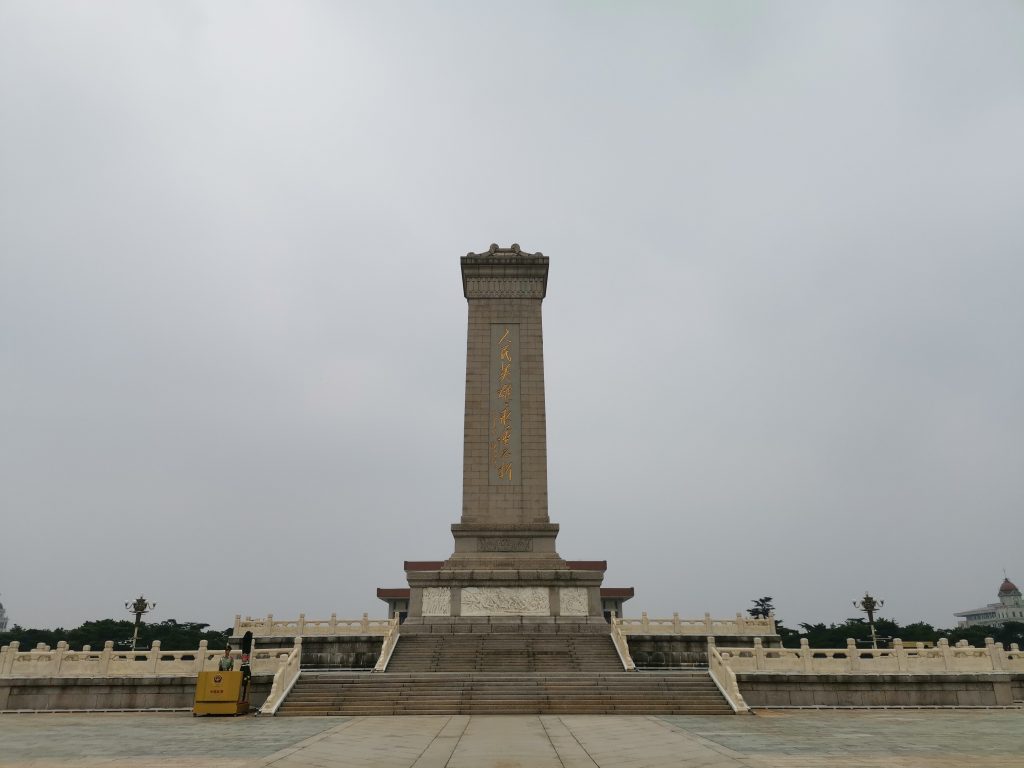
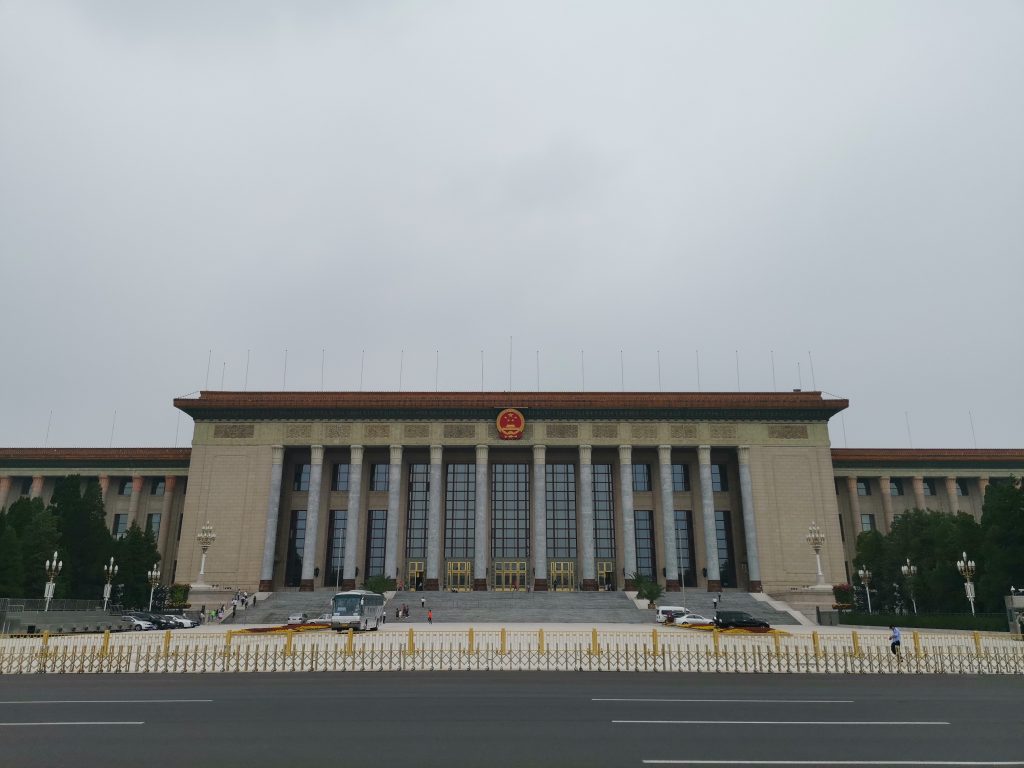
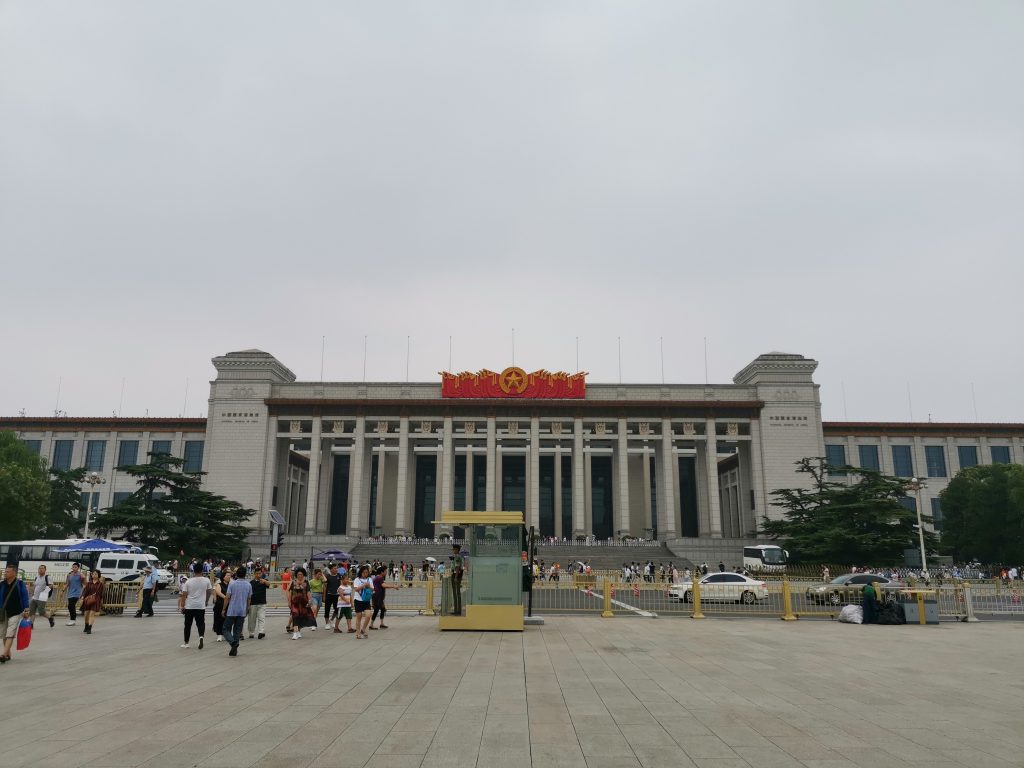

With the Mausoleum already closed by noon, I settled for a leisurely stroll around the square, before finally heading back to Hangzhou. And with that, came an anticlimactic end to my Beijing trip.






























